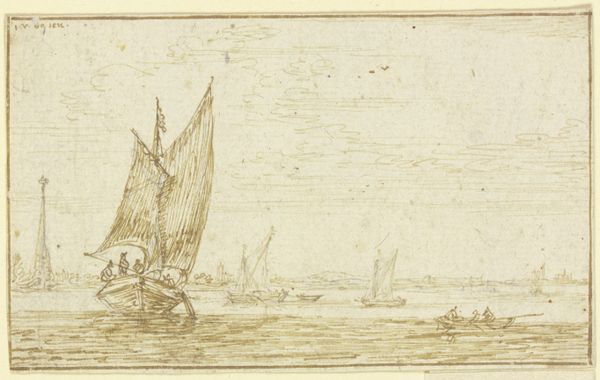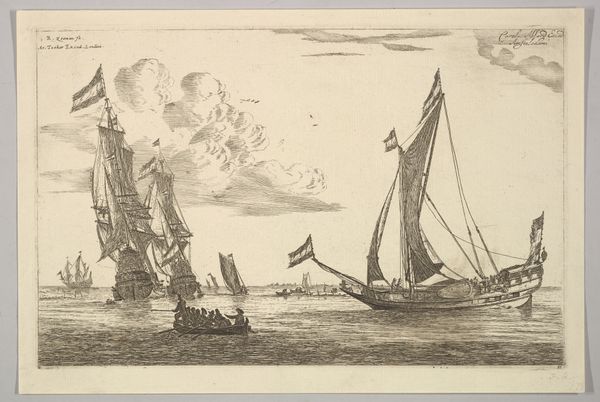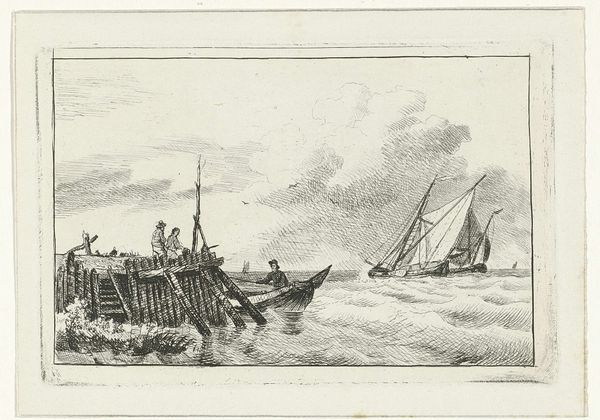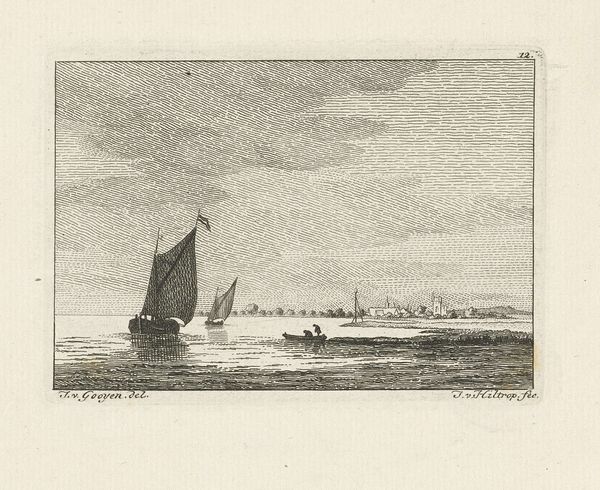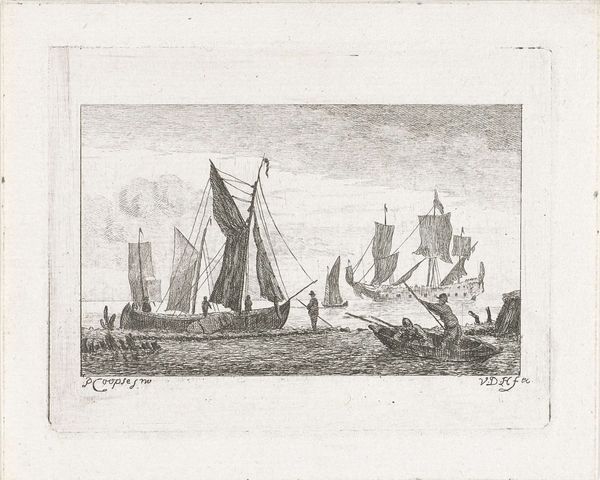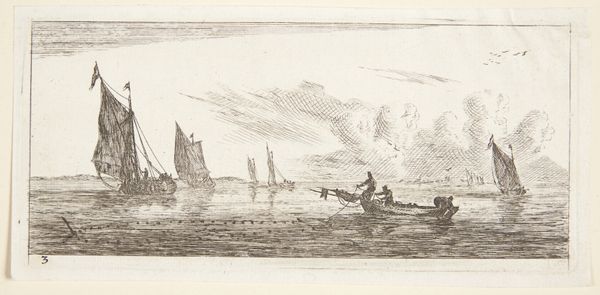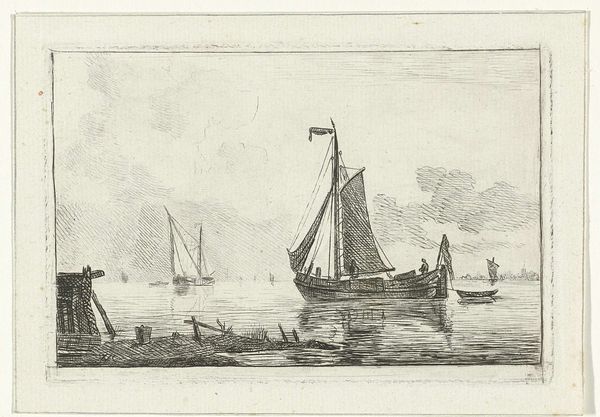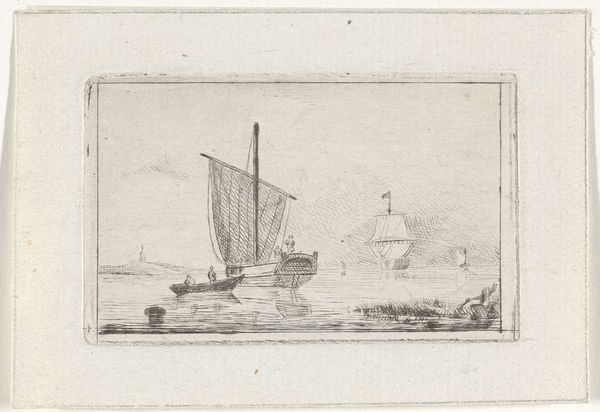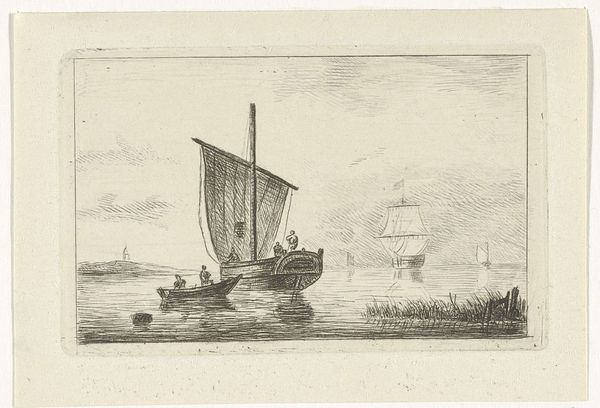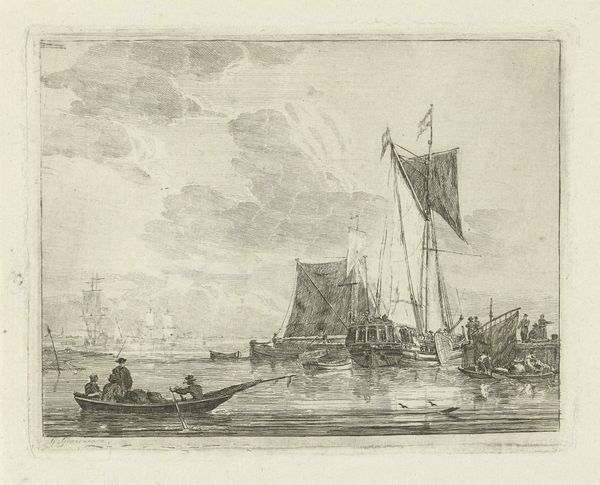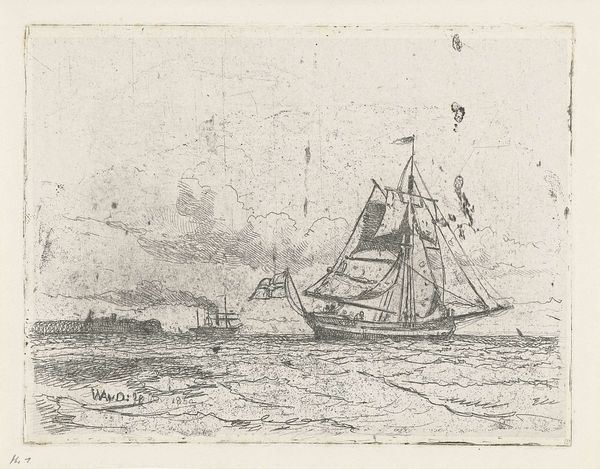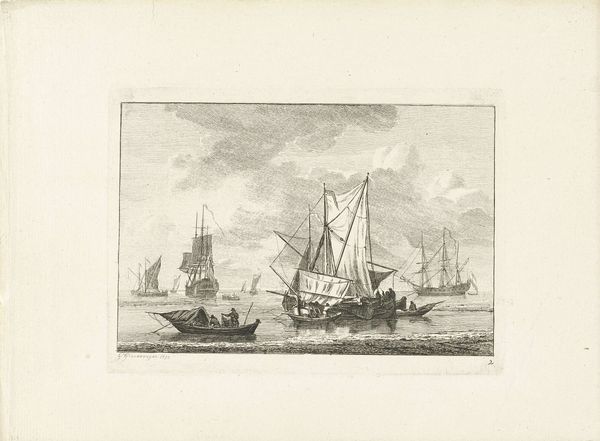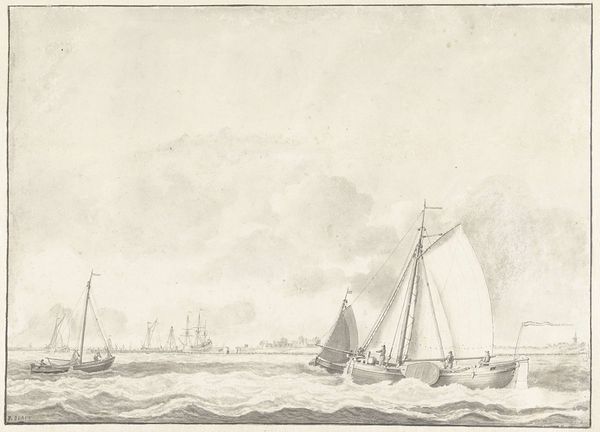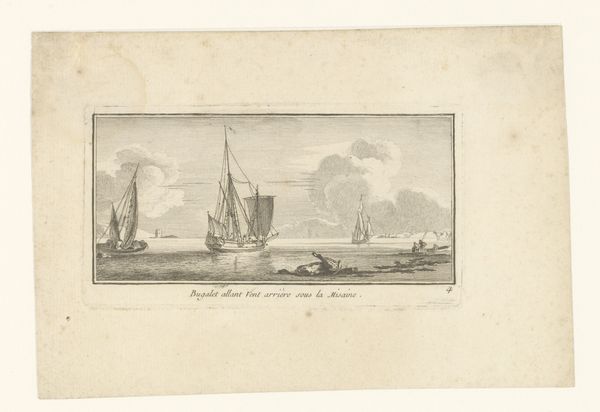
print, etching, engraving
# print
#
etching
#
landscape
#
engraving
Dimensions: height 150 mm, width 198 mm
Copyright: Rijks Museum: Open Domain
Curator: What a delicately rendered seascape. The etching and engraving, "Twee schepen op zee," dating from around 1750 to 1800 and attributed to G. van Citters, captures a calm, expansive scene with incredible detail. Editor: It feels rather muted. The greyscale palette lends a tranquil almost melancholic mood, wouldn’t you agree? And, there's something captivating in the meticulous etching of the hulls of those ships; almost a focus on them being transport vessels for commerce. Curator: Absolutely. Considering this piece through a historical lens, remember that this era witnessed burgeoning maritime trade. Pictures like these weren’t just aesthetically pleasing, they signified Holland's mercantile strength, a key aspect of its golden age reflected through the market it supplied. Editor: So, less a romantic portrayal of the sea, and more of an acknowledgement of maritime labour? The careful crafting of the sails and rigging surely demonstrates pride in shipbuilding practices and their societal impact, too. And how prints like this spread these symbols of production beyond the elite... Curator: Precisely. The choice of printmaking allowed for wide distribution, reinforcing the importance of maritime activity across different social strata, wouldn't you agree? Consider who the patrons were that acquired these images and where these prints were displayed in public spaces to understand their visual rhetoric. Editor: You're making me consider it with a fresh perspective. Before, it simply seemed like a pleasant, though subdued, marine view, but considering its historical milieu… I'm far more conscious of the social and material reality that shapes the narrative within. Curator: Ultimately, these seemingly quiet scenes are teeming with information about the values and beliefs of their time. Examining such works exposes a wealth of cultural and historical evidence waiting to be interpreted. Editor: A superb discussion; one that reminds us to consider a piece like this through material agency to better understand the mechanisms of cultural validation and production.
Comments
No comments
Be the first to comment and join the conversation on the ultimate creative platform.
